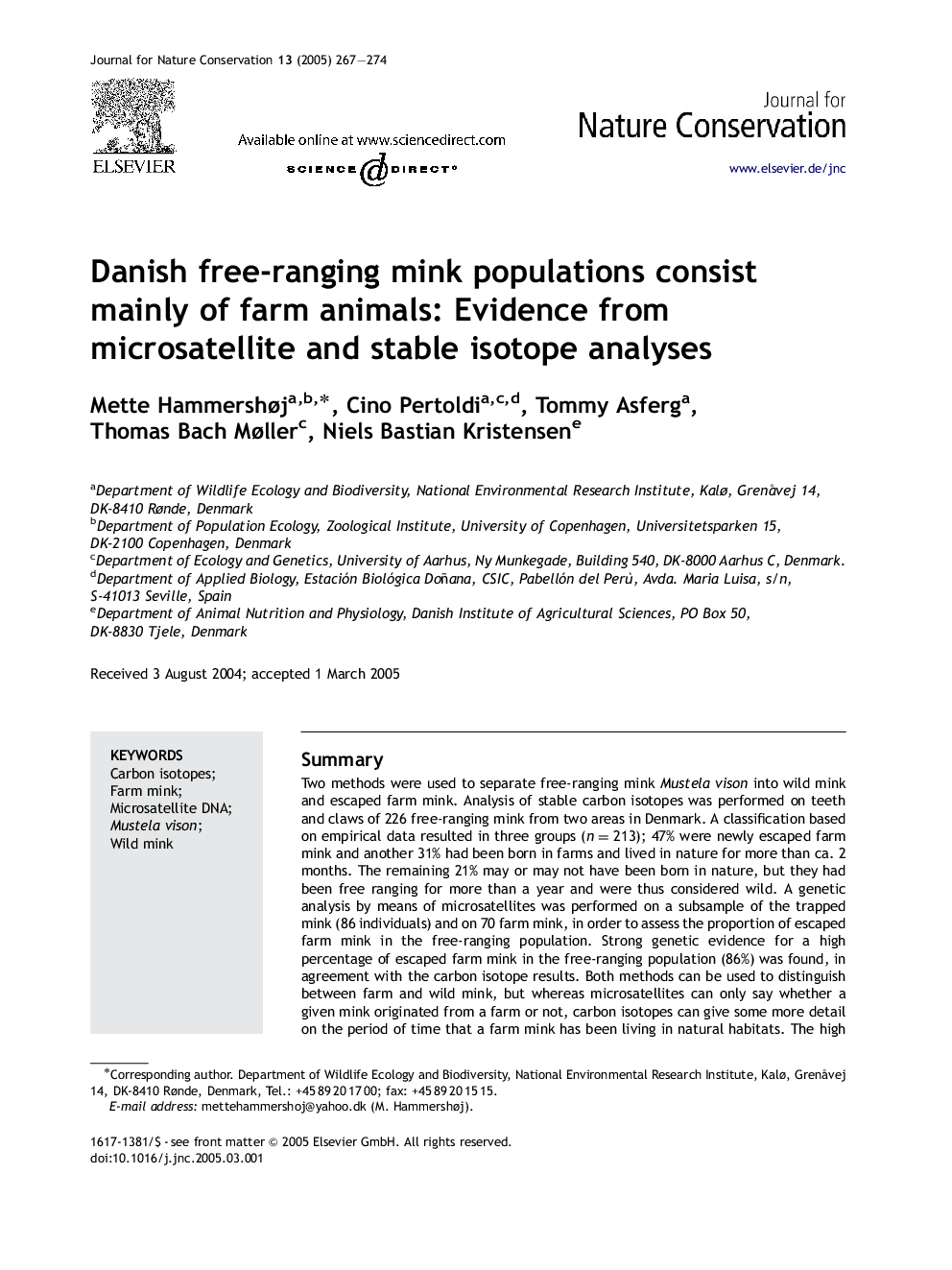| کد مقاله | کد نشریه | سال انتشار | مقاله انگلیسی | نسخه تمام متن |
|---|---|---|---|---|
| 9450476 | 1306924 | 2005 | 8 صفحه PDF | دانلود رایگان |
عنوان انگلیسی مقاله ISI
Danish free-ranging mink populations consist mainly of farm animals: Evidence from microsatellite and stable isotope analyses
دانلود مقاله + سفارش ترجمه
دانلود مقاله ISI انگلیسی
رایگان برای ایرانیان
موضوعات مرتبط
مهندسی و علوم پایه
علوم زمین و سیارات
علوم زمین و سیاره ای (عمومی)
پیش نمایش صفحه اول مقاله

چکیده انگلیسی
Two methods were used to separate free-ranging mink Mustela vison into wild mink and escaped farm mink. Analysis of stable carbon isotopes was performed on teeth and claws of 226 free-ranging mink from two areas in Denmark. A classification based on empirical data resulted in three groups (n=213); 47% were newly escaped farm mink and another 31% had been born in farms and lived in nature for more than ca. 2 months. The remaining 21% may or may not have been born in nature, but they had been free ranging for more than a year and were thus considered wild. A genetic analysis by means of microsatellites was performed on a subsample of the trapped mink (86 individuals) and on 70 farm mink, in order to assess the proportion of escaped farm mink in the free-ranging population. Strong genetic evidence for a high percentage of escaped farm mink in the free-ranging population (86%) was found, in agreement with the carbon isotope results. Both methods can be used to distinguish between farm and wild mink, but whereas microsatellites can only say whether a given mink originated from a farm or not, carbon isotopes can give some more detail on the period of time that a farm mink has been living in natural habitats. The high proportion of escaped farm mink in the Danish nature could have serious implications for the preservation of other vulnerable species and should be carefully considered when designing conservation strategies.
ناشر
Database: Elsevier - ScienceDirect (ساینس دایرکت)
Journal: Journal for Nature Conservation - Volume 13, Issue 4, 6 December 2005, Pages 267-274
Journal: Journal for Nature Conservation - Volume 13, Issue 4, 6 December 2005, Pages 267-274
نویسندگان
Mette Hammershøj, Cino Pertoldi, Tommy Asferg, Thomas Bach Møller, Niels Bastian Kristensen,